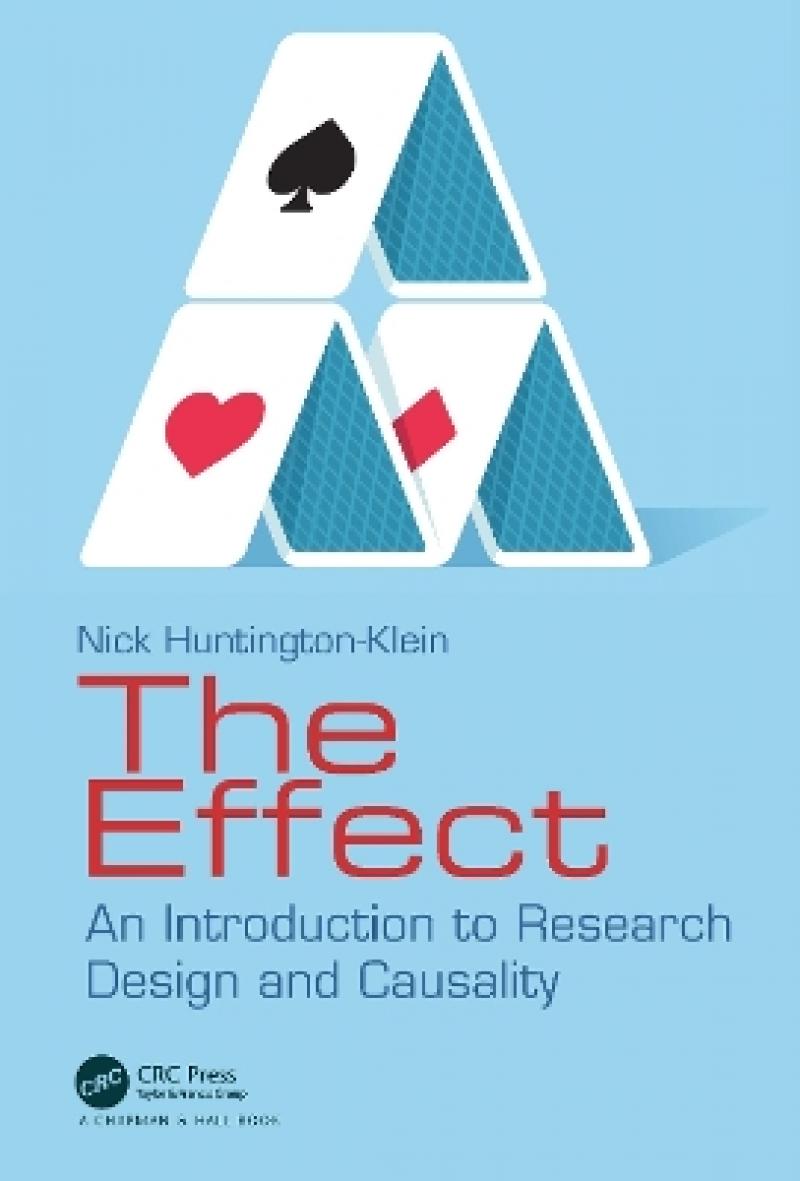<p>"Nick has created a classic. Can’t say it any other way. It’s the replacement for Mastering Metrics that we all wanted. This is the book that will empower students in both understanding what econometrics is or can be, and how to get from A to B with programming practice. He has created numerous on-ramps into econometrics that can help hit many different types of students at where they are, rather than teaching to students who most resemble the kind of student that our econometrics and statistics professors were when they were the students’ age. I mean that in the most flattering way possible.</p><p>I think the book is phenomenal and will sell well. It’s basically an ambitious book that seeks to take students with zero knowledge of causal inference, but also zero knowledge of programming languages, and possibly even minimal knowledge of statistics, and over 600 pages with excellent writing, extensive programming examples across multiple languages, and causal graphs cover just about everything remotely conceivable to make a student conversant and maybe even competent. Except for my book, there’s nothing like what Nick has done on the market …It will be a very popular companion textbook on many econometrics courses, and may even help facilitate the creation of more causal inference courses are all levels. I think Nick has absolutely nailed it."</p><p><i><b>- Scott Cunningham, Baylor University (author of Causal Inference: A Mix Tape)</b></i></p>
<p>"A must-read for all epidemiologists and biostatisticians, due to its coverage of key principles of causal inference. Therefore, thisbook may be recommended to any methodologist in the field of health research, who strives to gain a comprehensive understanding of causal inference theoretically, and the statistical skillset to answer research questions using observational data."</p><p><b>Myanca Rodrigues</b>, <i>Canada</i>, ISCB News, June 2022.</p><p>"The Effect is a gentle introduction to causality and researchdesign which is accessible to a wide audience. By intent, thebook does not overload the reader with formal notation ormathematics. Instead, the author, Nick Huntington-Klein,builds intuition through helpful examples and plots"</p><p><b>Y. Samuel Wang</b>, <i>USA</i>, Data Science in Science, February 2023.</p><p>"The author clearly has achieved the goal of providing an accessible introduction to causality. Any newcomer to causal inference would benefit from reading this book. Huntington–Klein’s conversational delivery and avoidance of explicit mathematics in the first half of the text provides the reader with the building blocks to causally reason about a system. The second part strives to make technical tools accessible, and the code examples make these tools readily available for readers to try on their own data. This textbook will be a useful addition to the library of anyone studying causal discovery and inference."</p><p><b>Hung-Ching Chang and Muchael T. Gorczyca</b>, Biometrics: A Journal of the International Biometric Society, 2023.</p><p>"Overall, this book, though very voluminous, is an excellent addition to the world of literature. The book contains a good number of examples and wonderfully drawn diagrams, that facilitate a clearer understanding of the concepts. It is a wonderful exhibition of the parts and parcels of research design and causality."</p><p><b>Nisar Ahmad Khan</b>, <i>India</i>, Technometrics, April 2023.</p><p>"A great textbook for an undergraduate introductory data science course or social science methodology course as well as a reference for beginning graduate students. It would also benefit researchers who are working with data but are wholly clear about where to start when investigating causal relationships."</p><p><b>Brian W. Sloboda</b>, <i>University of Maryland, USA, </i>International Statistical Review, 2023.</p>
The Effect: An Introduction to Research Design and Causality is about research design, specifically concerning research that uses observational data to make a causal inference. It is separated into two halves, each with different approaches to that subject. The first half goes through the concepts of causality, with very little in the way of estimation. It introduces the concept of identification thoroughly and clearly and discusses it as a process of trying to isolate variation that has a causal interpretation. Subjects include heavy emphasis on data-generating processes and causal diagrams.
Concepts are demonstrated with a heavy emphasis on graphical intuition and the question of what we do to data. When we “add a control variable” what does that actually do?
Key Features:
- • Extensive code examples in R, Stata, and Python
- • Chapters on overlooked topics in econometrics classes: heterogeneous treatment effects, simulation and power analysis, new cutting-edge methods, and uncomfortable ignored assumptions
- • An easy-to-read conversational tone
- • Up-to-date coverage of methods with fast-moving literatures like difference-in-differences
The Effect: An Introduction to Research Design and Causality is about research design, specifically concerning research that uses observational data to make a causal inference. It is separated into two halves, each with different approaches to that subject.
Chapter 1 Designing Research Chapter 2 Research Questions Chapter 3 Describing Variables Chapter 4 Describing Relationships Chapter 5 Identification Chapter 6 Causal Diagrams Chapter 7 Drawing Causal Diagrams Chapter 8 Causal Paths and Closing Back Doors Chapter 9 Finding Front Doors Chapter 10 Treatment Effects Chapter 11 Causality with Less Modeling Chapter 12 Opening the Toolbox Chapter 13 Regression Chapter 14 Matching Chapter 15 Simulation Chapter 16 Fixed Effects Chapter 17 Event Studies Chapter 18 Difference-in-Differences Chapter 19 Instrumental Variables Chapter 20 Regression Discontinuity Chapter 21 A Gallery of Rogues: Other Methods Chapter 22 Under the Rug
Produktdetaljer
Biografisk notat
Nick Huntington-Klein is a professor of economics at Seattle University specializing in the study of the education system and applied econometrics. He is known as someone who can clearly explain complex topics in econometrics, and his teaching materials have been shared online tens of thousands of times. To his great anguish, his toddler daughter refuses to learn about sampling variation and would rather listen to that one Moana song on repeat.
